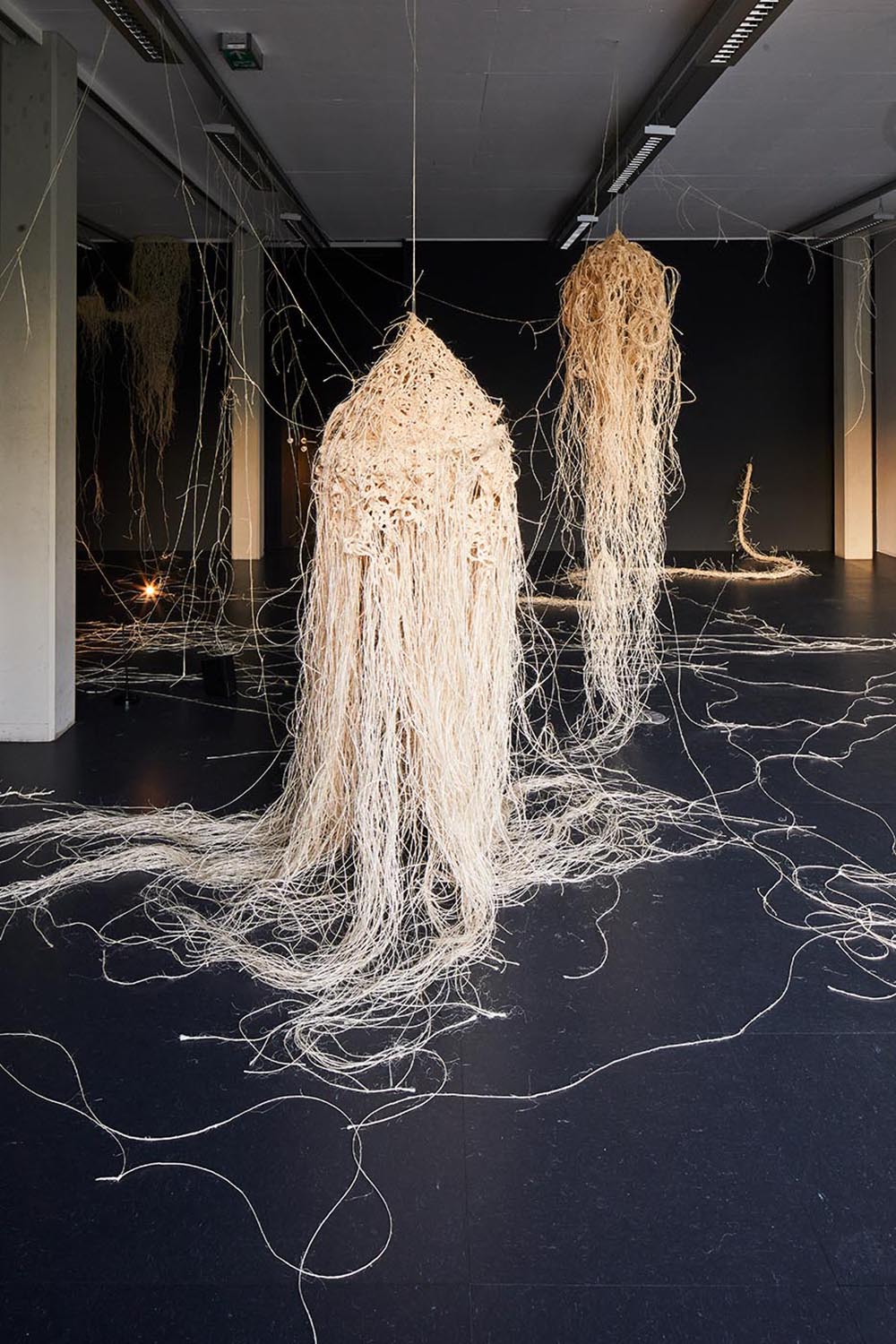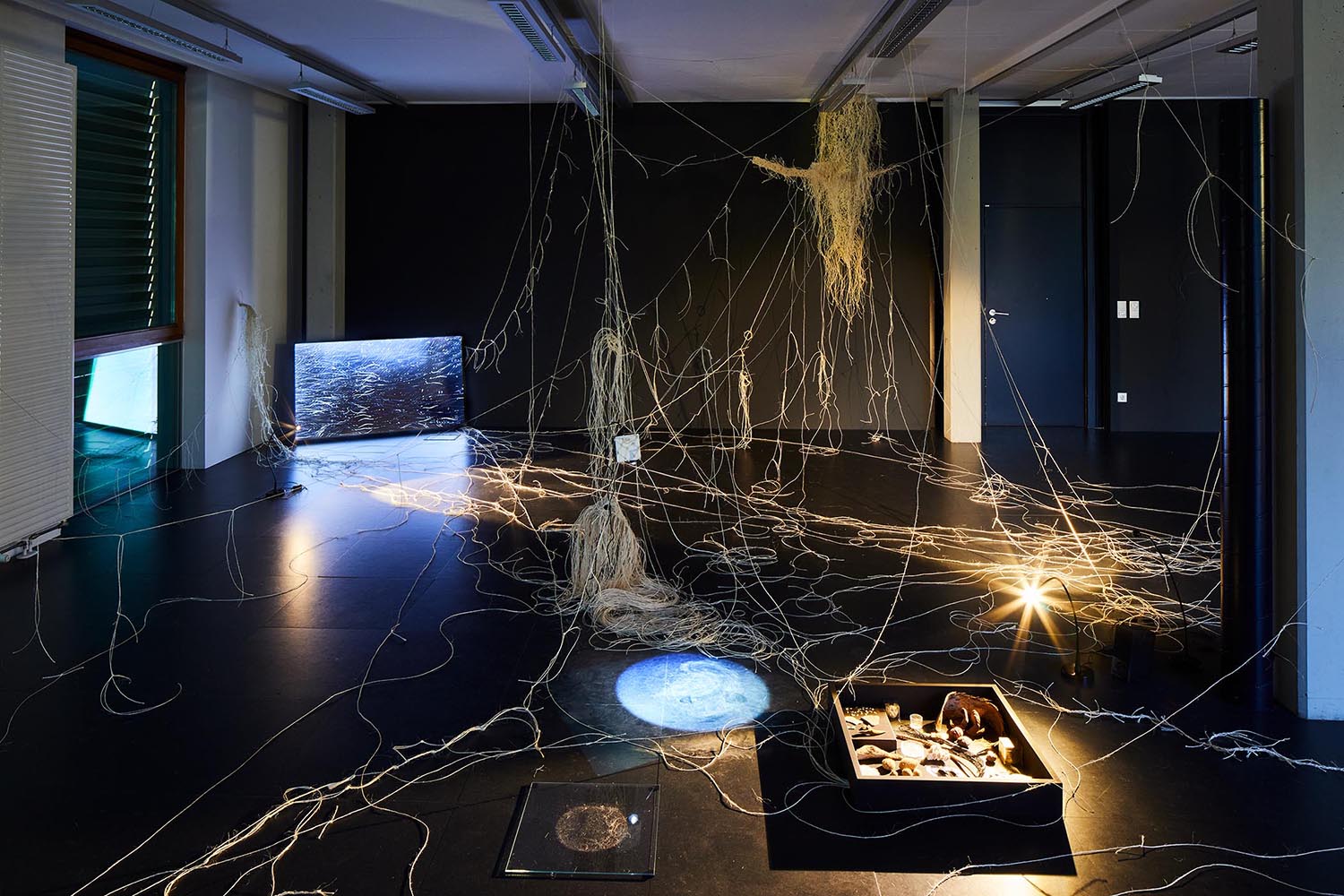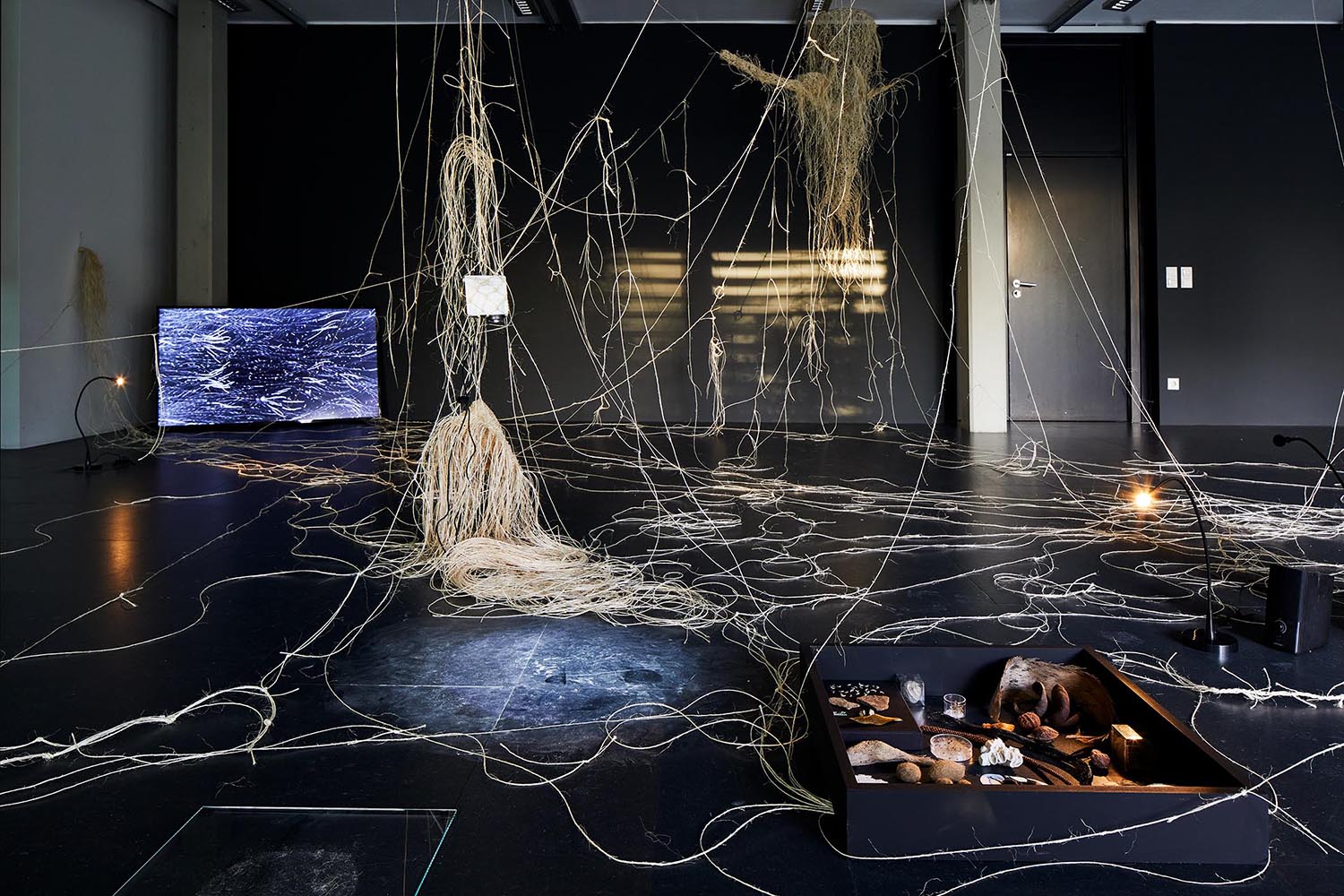Opening, May 10, 7 pm
Exhibition, May 11 – June 9, 2022
Natural sciences, like physics, genetics, or biology, as the study of living material, count among the multitude of departure points for Simona Koch. In experimental research setups, ranging from expansive installations to artist books, she traces the living in all of its facets, while continuously generating new working methods and procedures. Like a scientist, she works systematically and reflexively: things as animistic information carriers, which survive numerous human generations; the growth of so-called superorganisms, including complex structures such as cities; universal family trees that collect genomes; terms lent from scientific classification such a “roots”, “heritage”, and “essence”.
Departing from her own biography, Simona Koch investigates and visualizes networks of relationships in her work series Universal Family Tree (2012–2014), Human Fabric (since 2015), or Mycelium of Humans (since 2017). She charts intertwining traces of her own biography with that of people from Germany, East Prussia, Austria, The Netherlands, USA, Switzerland, France, England, and Belgium, whose histories date back to the early fourteenth century. Her approach oscillates between the smallest and largest structures, between personal experience and situated knowledge. The resulting artworks assume the form of illustrated diagrams or animated drawings, maps, videos, and collages, or the artist devises sculptures in meticulous linking processes, which resemble a DNA double helix.
For Kunstraum Lakeside, Simona Koch has developed the series Interbeing. In contrast to previous projects, in which strands of ropes connect related individuals across epochs and are tied into a linearly structured mesh, Interbeing is composed of countless individual fibers that branch out like a net simultaneously in all directions, representing the experiences that constitute the beings. Koch connects element to element with one or more knots. Seemingly organic sculptures—whose form is conceived as open-ended and not fixed, as temporary status descriptions of processes underlying the evolution of the world—stretch out their tentacles and feelers in the exhibition space, from Interbeing / Condition #1 to Interbeing / Condition #6. They resemble jellyfish and mollusks—shapeshifters awaiting contact with each other or interaction with the other elements in the space. The beige-brown fibers of the sisal agaves emphasize this effect, as these plant fibers twisted into strings do not have homogeneous surfaces. Rather, they fray and their cohesion, secured by twists, seems in gradual dissolution. The large appendages proliferating in the space, the strands of the noose, the nest on a branch, all of these sculptures that transform the space into a superordinate structure, a hyperstructure, which in turn is embedded in a greater whole, reiterate in the deconstruction of the sisal cord into ever smaller patterns like a fractal.
Not only the knotted elements in Simona Koch’s exhibition refer to the concept of “interbeing”, but also how the installation intervenes in Kunstraum Lakeside: the floor, walls, and ceilings of the exhibition space are connected both in color and by sisal cords. Between the works, from Interbeing / Condition #1 to Interbeing / Condition #6, serving as a background, the artist positions animations of drawings hand-made with chalk dust, depicting cycles and developmental processes in moving images. Furthermore, there are displays with found objects from nature: Presented like in a natural science museum, the honeycombs, sea balls, and blossoms collected by Koch, but also items like computer circuit boards and copper wires, conjure organic-rhizomatic connections and digital networking. The installation is complemented by a soundtrack that can be controlled by the viewers themselves.
The term “interbeing” originates from the teachings of Buddhist monk Thích Nhất Hạnh, who describes the entanglement of all phenomena and their embeddness in a highly complex system of not only human relationships from a spiritual perspective. The fact that all elements of the universe and, broken down to a smaller scale, all elements of the world are interwoven becomes particularly evident in times of a pandemic dominating public discourse, in face of fragile supply chains spanning the globe, and against the backdrop of politically, ethnically, or religiously motivated wars. For only when a structure threatens to fall out of balance do individual components surface as disturbing factors. With Interbeing, Simona Koch not only draws upon ideas originating from Buddhism or other spiritual traditions, she refers to scientific fields where different forms of connectedness are encapsulated with terms such as “enactivism” (Humberto Maturana and Francisco Varela), “Élan vital” (Henri Bergson), “togetherness” (Alfred North Whitehead), or “sympoiesis” (M. Beth Dempster and Donna Haraway). “The many stuffs—matter, energy, waves, phenomena—that worlds are made of are made along with the worlds,” writes philosopher Nelson Goodman in his Ways of Worldmaking. “But made from what? Not from nothing, after all, but from other worlds. Worldmaking as we know it always starts from worlds already on hand; the making is a remaking.”* That Simona Koch’s artistic research practice is performative in the sense of a field of action that not only describes but also makes the world becomes clear latest when one enters the exhibition space and enters her universe.
* Nelson Goodman, Ways of Worldmaking (Indianapolis: Hackett Publishing Company, 1978), 6.
Speaker of sound pieces: Christopher Barber
Simona Koch (b. 1974 in Germany) lives and works in Vienna and Neustadt/Aisch, Germany.
www.simonakoch.de
www.abiotismus.de












